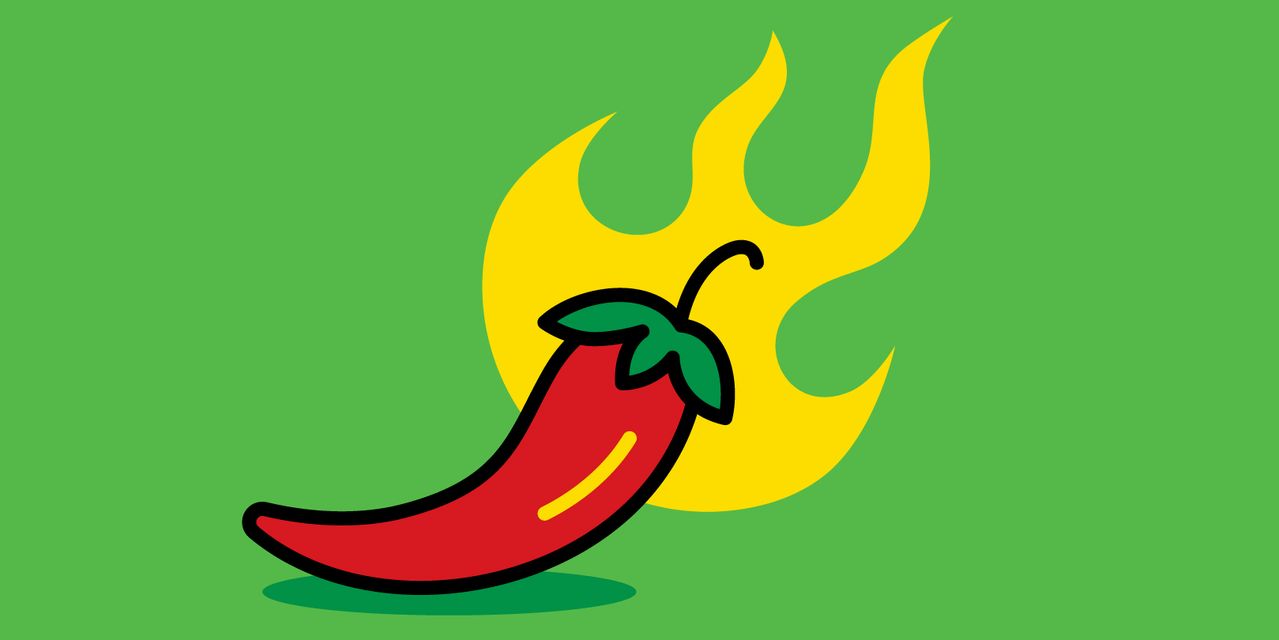Climate change has led to a decline in chili pepper production and a boost in prices. The timing couldn’t be worse: Demand for spicy food products is heating up.
The stakes are high for this year’s harvest, which is under way in regions that provide much of the global supply of peppers used in salsas, sauces, and dips—New Mexico, California, Texas, and Arizona, as well as Mexico. A mix of desirable hot temperatures and lack of severe drought has raised expectations for a successful season, says Travis Day, executive director of the New Mexico Chile Association.
The crop thrives in very hot weather but is also vulnerable to drought. Too much moisture also is a threat. The crops are constantly “looking for a way to die,” Day says. “It is a very finicky plant.” Other issues: Many of the roughly 4,000 varieties have sensitive growing patterns, so are handpicked; harvesting is unreliable; and the number of people willing to do the fieldwork is shrinking.
Chili peppers’ struggles have carried over to the supermarket. Huy Fong Foods, maker of a popular Sriracha sauce, cut production after a couple of bad harvests of red jalapeños. Prices for its 28-ounce bottle, usually less than $10, surged to $70 or more. Limited production has resumed, but spicy-food lovers could still feel the heat for the California company’s Sriracha sauce for a while.
Last Week
Markets
Highflying tech stocks gave markets a boost to start the week, with the three major indexes up on Monday. Stocks got another lift on Tuesday from better-than-expected retail sales. But things turned sour on Wednesday, with China’s economic woes pulling markets down. The July Fed minutes revealed that most officials saw a “significant” risk of continued above-target inflation. The tech-heavy
Nasdaq Composite
led the slide on Thursday, and the 10-year U.S. Treasury yield hit a 16-year high. On the week, the
Dow Jones Industrial Average
lost 2.2%, the
S&P 500
was off 2.1%, and the Nasdaq was down 2.6%.
Companies
Hawaiian Electric Industries, accused of having a role in the Maui wildfires, plunged as much as 41% on Monday. The stock soared at week’s end when the utility provider said it won’t restructure. Target beat on earnings and improved margins but cut guidance. Deere crushed earnings and upped its guidance. Home Depot launched a $15 billion stock buyback program. Berkshire Hathaway took a new position in D.R. Horton and cut its stake in General Motors in the second quarter.
Deals
ArcelorMittal is considering a bid for U.S. Steel, Reuters reported. Cleveland-Cliffs and Esmark are also in the mix…Softbank Group bought a 25% stake in Arm that values the chip designer at slightly more than $64 billion, The Wall Street Journal reported…EV start-up VinFast Auto closed up 225% in its first day of trading on the Nasdaq on Tuesday before coming back down to earth.
Next Week
Tuesday, 8/22
More results from retailers arrive in the coming days, providing insights into the health of the U.S. consumer. Lowe’s and Macy’s report before the bell on Tuesday, and Kohl’s is on deck for Wednesday. Gap, Nordstrom, Dollar Tree, and Burlington Stores follow on Thursday.
Wednesday, 8/23
Nvidia announces fiscal second-quarter results after the market closes. Analysts surveyed by FactSet expect the chip company to report earnings per share of $2.08, compared with 51 cents a year earlier. Shares of Nvidia have tripled this year.
Thursday, 8/24
Central bankers, policy makers, academics, and economists descend on Jackson Hole, Wyo., for the Federal Reserve Bank of Kansas City’s annual economic policy symposium. Fed Chairman Jerome Powell speaks on Friday.
Friday, 8/25
The University of Michigan releases the final results of its August survey of consumers on Friday. A consumer sentiment index reading of 71.2, as expected by economists surveyed by FactSet, would be essentially unchanged from July.
Email: [email protected]
Read the full article here





